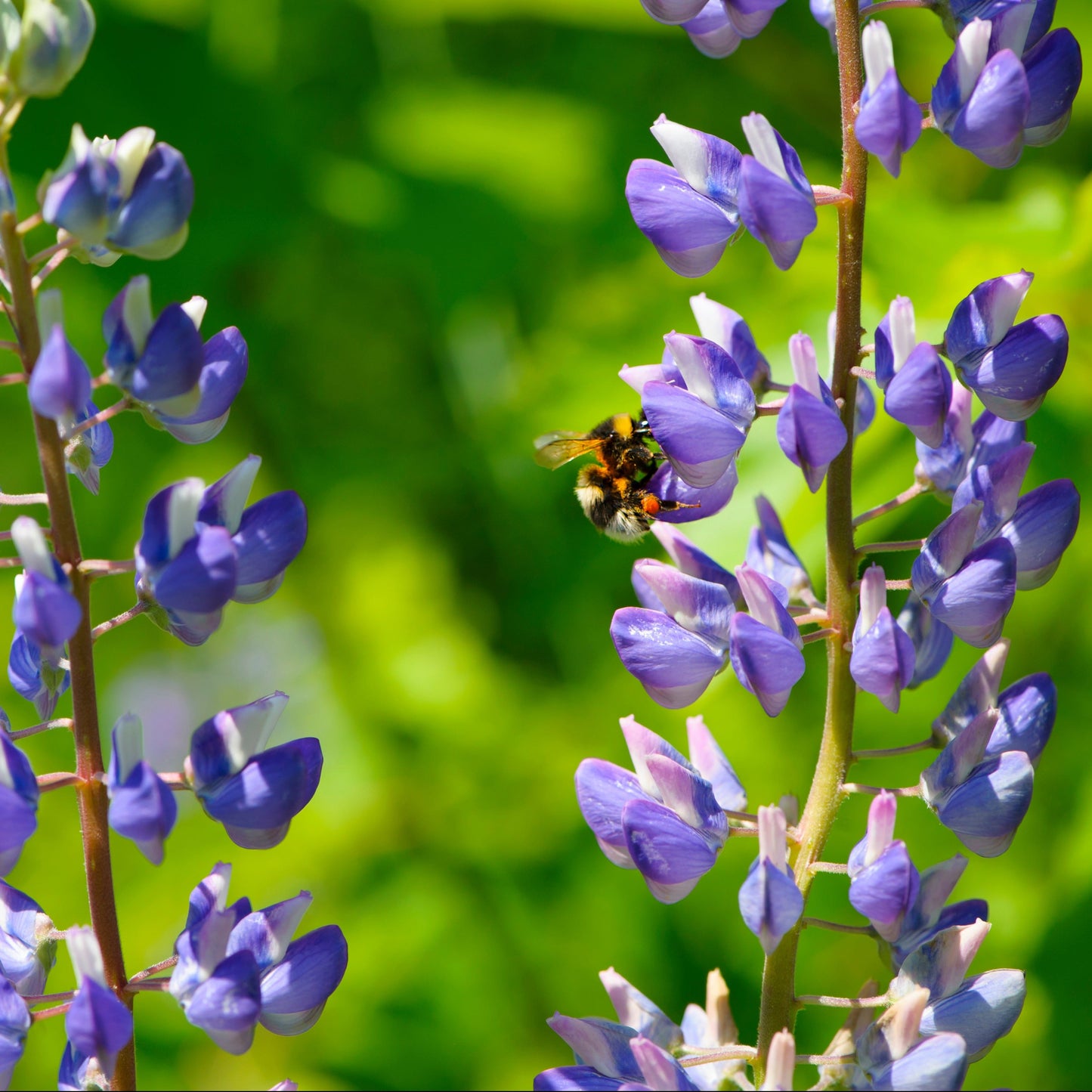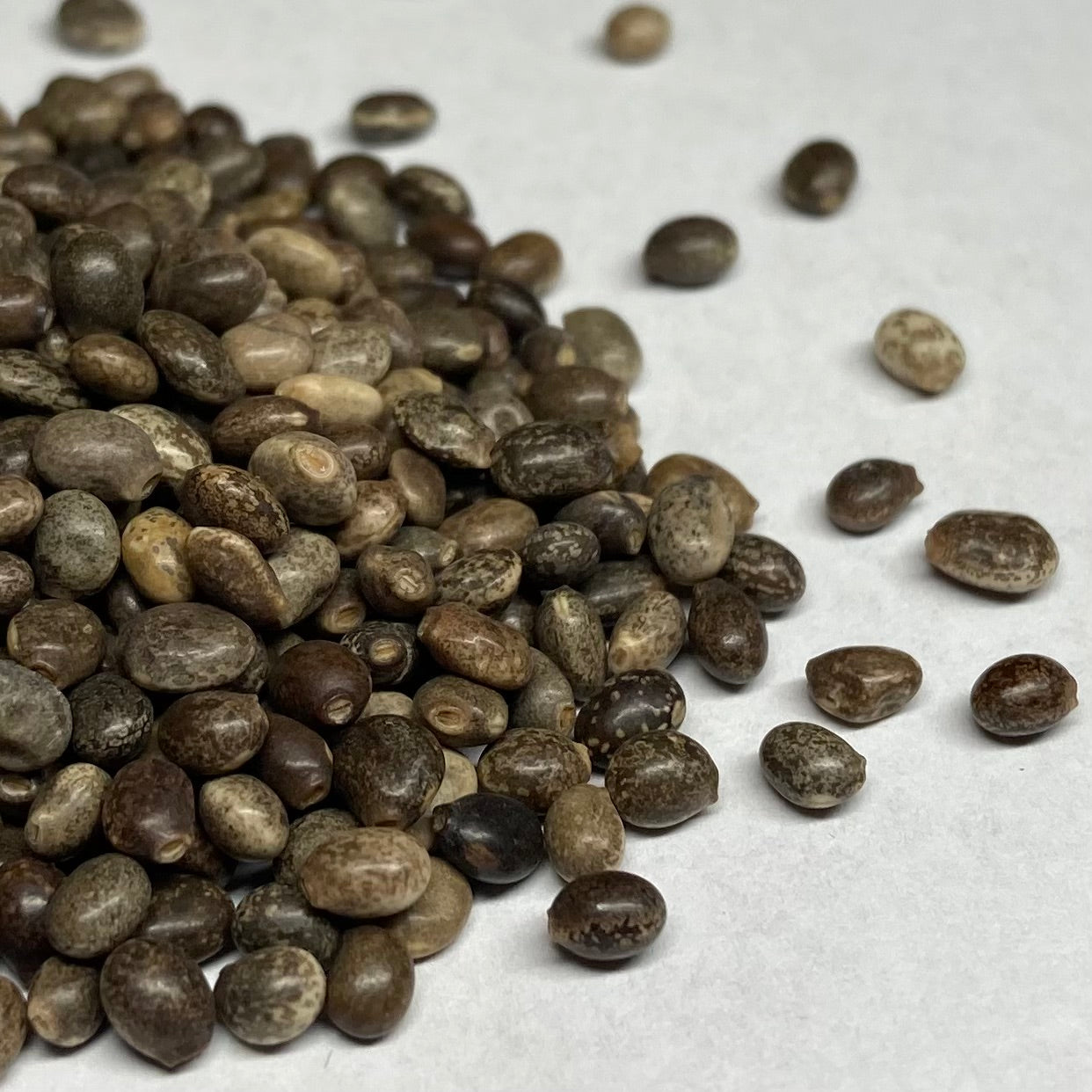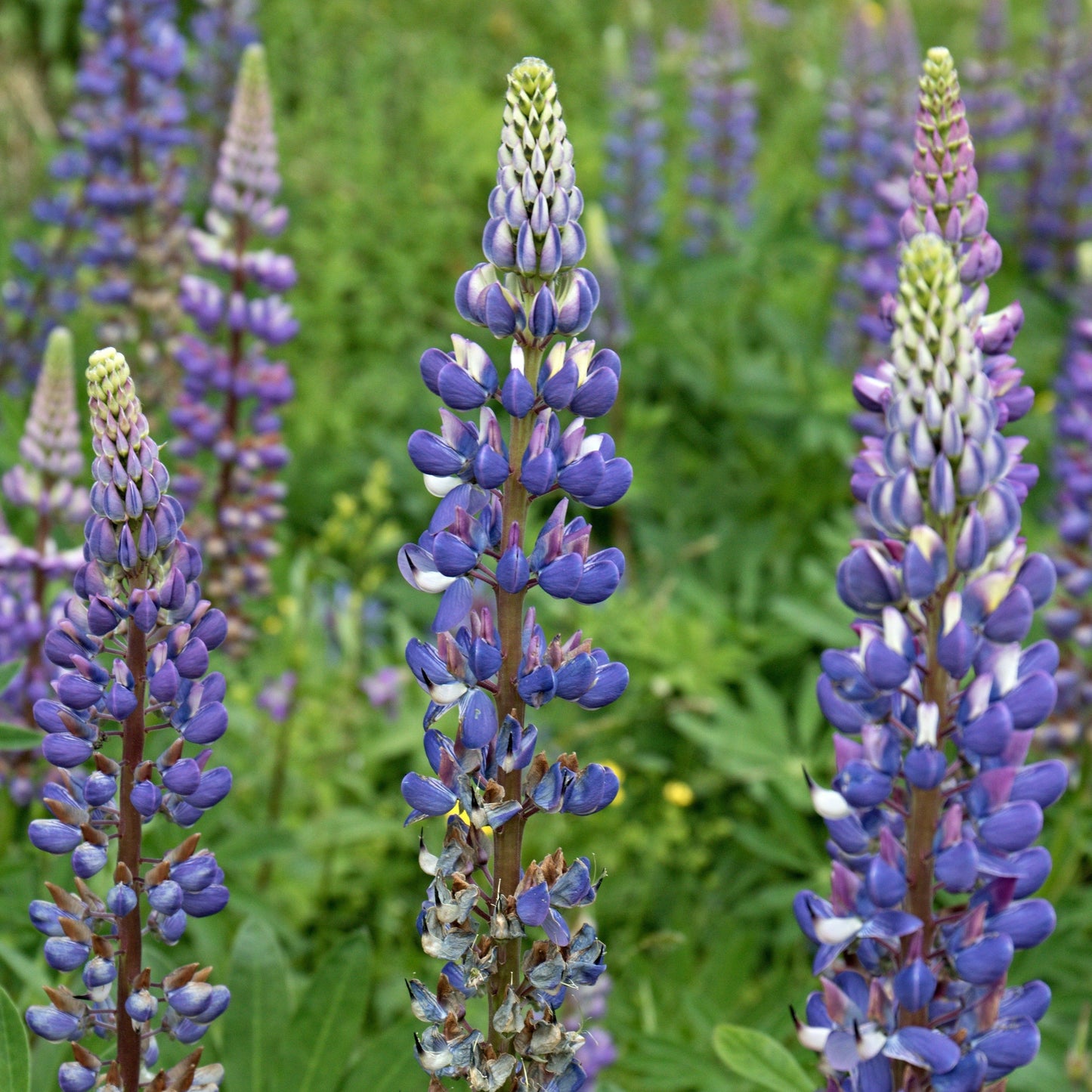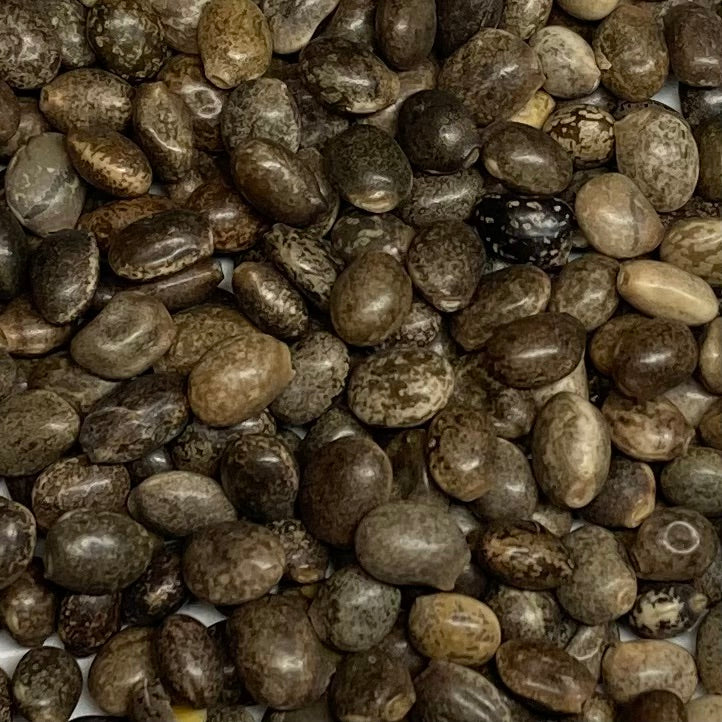Lupine, Wild (Lupinus perennis)
List Price: $4.00
Couldn't load pickup availability
As a member of the legume family, this native plant enriches soil through nitrogen-fixing— Wild Lupine is especially fond of dry soils, and can have great restorative effects there. The purple-blue spires of this plant add a pop of luminescence to the late spring and early summer landscape, and this alongside their grey-green foliage makes for an elegant sight to behold. Sometimes with lilac, pink, or white blooms, Wild Lupine is also known by the common name ‘Sundial Lupine.’ ‘Lupinus’ is derived from the Latin word for wolf, ‘lupus,’ as it was believed to ‘wolf’ or, rob, the mineral content of the soil. Quite the opposite!
Lupinus perennis is a host plant for the federally endangered Karner Blue Butterfly, though habitat destruction and fire control has decreased the presence of Lupine in the wild, further endangering this insect. Planting Wild Lupine is a wonderful way to nourish your soil, and provide necessary homes for this species, amongst others. Other butterfly visitors to this plant include: the Eastern Tailed Blue, Frosted Elfin, Queen Alexandra’s Sulphur, Wild Indigo Duskywing, and Persius Duskywing. Caterpillars of several moth species feed on Wild Lupine as well, and a great variety of bees feed on its pollen. However, be sure to note that this plant is toxic to sheep and horses, though lots of wildlife browse on the leaves of this plant. Birds and other small mammals feed on its seeds. Humans have been known to boil out toxins and consume the seeds as well, but it is not recommended to try eating these pods. Alongside its importance to many insects, planting Wild Lupine is also a means of preserving an endangered perennial that has lost its footing in many parts of the country.
Beloved by Thoreau, we see an 1851 journal entry that wonderfully sums up the breathtaking vision of a view crowded by Lupines: It paints a whole hillside with its blue . . . No other flowers exhibit so much blue. That is the value of the lupine. The earth is blued with them.







